Implementation of Inclusive Education and Community-Based Rehabilitation in Embu Diocese, Kenya
Embu Diocese organised a pilot project with the aim of developing inclusive education in 30 schools. A key feature of the programme was the full involvement of local communities in the inclusion of all children. After three years, a research study was carried out to explore progress and effectiveness. The research intended to both describe and analyse the inclusive education programme and to identify features associated with successful practice. It also aimed to provide valuable information to support the further development of the programme and to inform other inclusive education programmes both in Kenya and elsewhere.
The main aims of the project were to:
- provide equal education opportunities for children with special needs in the pilot schools;
- provide inclusion skills to teachers, community and other stakeholders;
- increase the enrolment of children with special needs in the pilot schools;
- enhance community development among the school community in the pilot schools.
The main aims of the research were to:
- provide information on the development of the Embu Community-Based Rehabilitation and Inclusive Education Programme;
- carry out an overview study of the 30 inclusive education pilot schools;
- carry out a case study in two pilot schools, one that seemed to have done well and one that displayed implementation challenges.
The Diocese of Embu is in Kenya’s Eastern Province and has the same boundaries as Embu County. At the time of the project, the County had a population of 449,149. Of these, 37.67% were children under 18 years of age. Those living in poverty amounted to about 50% (Institute of Economic Affairs, 2002).
At the time of the pilot project initiation, there were about 400 public primary schools with an estimated 115,000 children in Embu Diocese/County. The percentage of children with disabilities enrolled in schools before the pilot was 0.4% (466) including those in special schools and 0.3% (307) excluding those in special schools. After the launch of inclusion, the percentage in the schools went up to 1.2% (1,336), which was an increase of 0.8% (870). During the time of the project implementation, the government funded all public primary schools.
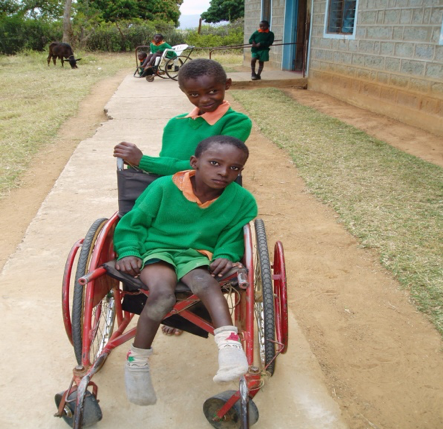
- Measurement of school performance through academic performance (mean score)
- Participation of the community in development of the Education Policy
- Lack of clear policy implementation monitoring and evaluation procedures and policies
- The contradicting priority in policy which seems to support both inclusive and segregated education.
Implementation process of inclusive education in Embu Diocese
The idea to implement inclusive education began when a senior staff member was undertaking MSc studies at the University of London in 1999–2000. She began to understand the meaning of inclusion and also realised the gaps in an integration programme then being implemented in Kenya. When she returned to Embu, she shared her idea with the Diocese, which was accepted and piloted in 30 public schools. In order for the implementation to be effective, the Diocese chose to collaborate with the Ministries of Education, Health and Social Services. Inputs from the United Disabled Persons and AMREF Kibwezi CBR programme were also intertwined. This deliberately took place during planning, implementation and monitoring throughout the project period. The project seemed to have a positive impact and was viewed by both the Ministry of Education, Science and Technology (MOEST) and UNESCO as a good model. After the three-year implementation period, the researcher and the Diocese saw the need to carry out further studies in order to explore the lessons learnt. This research was based on these studies.
The project and the research were set in a number of contexts and drew on a variety of theoretical and practical considerations. These included:
- the rapidly developing set of ideas about inclusion and inclusive education;
- studies of educational change and approaches to trying to understand factors in change;
- education and special educational needs in Kenya;
- the social and educational work of Embu Diocese.
The research questions were:
- How effective was implementation of inclusive education alongside the community-based approach?
- What processes were applied and what was the outcome?
- Which processes presented challenges or successes to implementation?
- What was the result of linking processes to outcome?
Summary of the background key events that led to this initiative
- The initiative emerged from a community request that there was minimal intervention for children with special needs
- A baseline survey (Van Linden, 1992), carried out in collaboration with the MOEST, justified the intervention
- The immediate interventions included integrated programmes in primary schools and the development of play groups in rural areas
- An external project evaluation recommended a community-based rehabilitation approach
- The community-based rehabilitation approach began (capacity support to initiate this was provided by the University of Uppsala, Sweden)
- Piloting in inclusive education and community-based rehabilitation in 30 public primary schools (capacity support was provided by University College, London)
- Research on the inclusive education pilot programme (capacity support from the University of Reading, UK).
Enrolment of children with disabilities in the schools before and after the pilot
During this study there were about 400 public primary schools with an estimated 115,000 children in the Diocese/County. The percentage of children with disabilities enrolled in schools before the pilot was 0.4% (466) including those in special schools and 0.3% (307) excluding those in special schools. After the launch of inclusion, the percentage in the Diocese had gone up to 1.2% (1,336), which is a threefold increase by 0.8% (870). At the time of the project implementation, the government funded all public primary schools. The Diocese, in collaboration with the MOEST, piloted inclusive education for a period of three years. During this time, the number of children with disabilities enrolled in the pilot schools increased from 0.8% to 8.0%. The number of children with disabilities in the pilot area increased ten times (i.e. 8% compared to 0.8% before piloting), an increase of 7.2% after the launch of inclusive education.
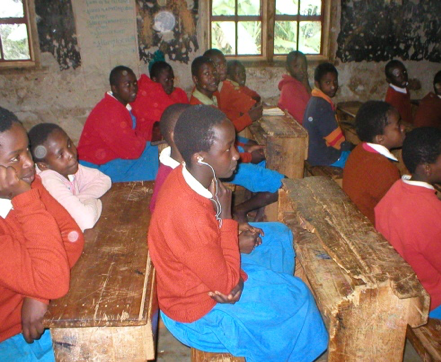
The information above shows that the pilot project enabled some children with disabilities to attend their neighbourhood schools. The research informs that the children with disabilities experienced high school enrolment after restructuring was carried out in the pilot schools. Mittler (2000) states that inclusion involves a process of reform and restructuring of the school as a whole. He asserts that the essential core of inclusive education is that all children should attend their neighbourhood schools, in the mainstream classroom (ibid.). Lake, in The State of The World’s Children (UNICEF, 2013), states that inclusion is possible and adds that for it to happen, effort should be put into changing perception and recognising that children with disabilities have the same rights as others. Artiles and Dyson (2005) agree and caution that, in many countries, mainstream schools with an inclusive orientation represent the only realistic prospect of access to education provision for marginalised learners. Dyson (2005) sees the curriculum as one obstacle that needs to be carefully designed. Fullan (2006) is emphatic that change knowledge does matter and should not be ignored.
How was the initiative/policy implemented?
Inclusion policy was developed at the level of the school communities. Different groups defined their roles and worked to develop their own policies which complemented national policies. The national policy had implementation gaps and was therefore not as realistic on the ground. The Education Office provided relevant support, but this only remained at the local level, so there were sustainability challenges. The Education Officers and head teachers who were in-serviced by the Diocese provided a high level of support during the time of the project pilot.
Elements that worked to improve inclusion in schools
The single most common response from 15 out of 30 schools (50%) was that the training carried out by the Diocese highly assisted in implementation. This was followed by participation of the school community which was a response from ten schools (33%) and teacher involvement, which was also a response from ten schools (33%). Raising awareness among the school community was seen to have been key by eight head teachers (27%), while seven others (23%) thought parental involvement had played a major role. At least three head teachers (10%) said availability of teaching aids within school localities had helped, while only two others (7%) said that assessment of children with disabilities had been important. However, even where one element was identified as the lead, other elements also came into play. No school stated that they applied one element without the others. Fullan (1991) agrees with this approach. He argues that what happens at one stage of the change process strongly affects subsequent stages, but new determinants also appear. He goes on to assert that shared vision is more an outcome of a quality process than a precondition.
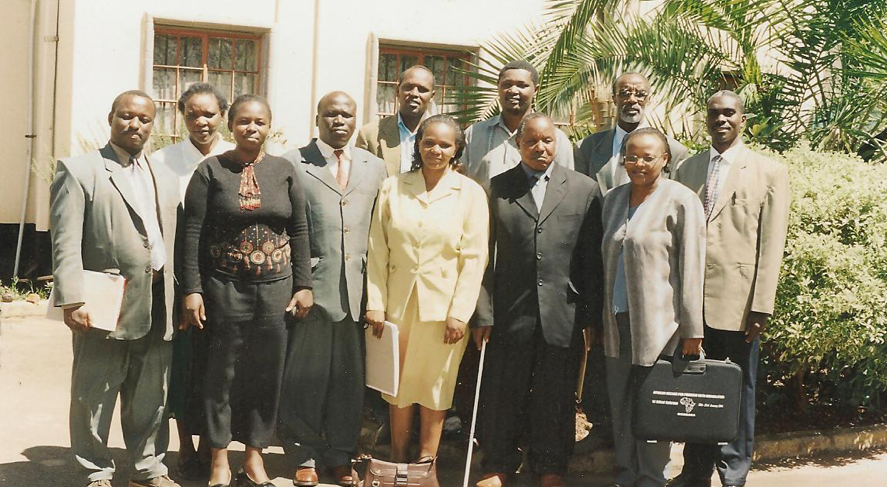
The UNESCO Salamanca Statement (1994) directs that community involvement should supplement school activities. Morrison (2002) argues that if a school is to emerge and develop effectively and smoothly, networks can become the platforms of scaffolding for the emergence of rich ideas. He adds that the development of a common vision is more important than the product of a common vision (ibid.). King and McGrath (2002) state that demand orientation should force quality and quantity to respond positively and that it is necessary to think very carefully about the nature of demand and who it is for. Fullan (2011) concurs and explains that the role of ownership of something new for a large number of people is tantamount to real change. However, he argues that ownership is not acquired easily. He adds that it is necessary to learn deeply to avoid superficiality. Fullan (2006) points out that motivation cannot be achieved in the short run and that the beginning of all eventual success is unavoidably bumpy. The researcher agrees and asserts that intense continuous research is needed for ownership to be achieved.
Fullan (1991) further asserts that educational change is a learning experience for the adults involved. Morrison (2002) informs that schools are relationships, connectedness and networked structures. Fullan (2006) highlights that for system change to occur on a larger scale, schools and districts must learn from each other. He states that individuals and groups working together must be clear about new educational practices that they wish to implement (1991). The researcher informs that it is important for study pilot schools to share their experiences with each other, to enrich their own knowledge, as well as knowledge sourced from elsewhere.
Who worked on and sustained the initiative/policy (key partnerships)?
Stakeholder’s responsibility in initiating inclusion in pilot schools
The most common response, from 11 of the 30 schools (37%), was that the Diocese itself was the main initiator. This was closely followed by the schools, which were described as the main initiator in ten cases (33%). In five cases (17%), the community had initiated the change and in three cases (10%) parents were the initiators. Fullan (1991) quotes Loise and Miles (1990), who found that initiatives can come from different sources. However, schools with formal special units were among those admitting the lowest percentage of children with disabilities (3%). Fullan (1991) maintains that strong commitment to a particular change may be a barrier to setting up an effective process of change. The researcher informs that this was a noteworthy experience for the Embu Schools. Dyson (2005) observes the concerns of many people from different backgrounds regarding the implementation of inclusive education. He cautions that while inclusion may be a principle for some, it may simply be a convenient and ambiguous language for others. Pather (2007) is of the same opinion and says that inclusion as a concept has been problematised over and over again. Peters (2007) adds that inclusive education in the context of the goals of Education for All is a complex issue. UNICEF explains that inclusion goes beyond ‘integration’ (2013, p. 3). Fullan and Hargreaves (2012) assert that the term ‘inclusion’ means different things to different people.
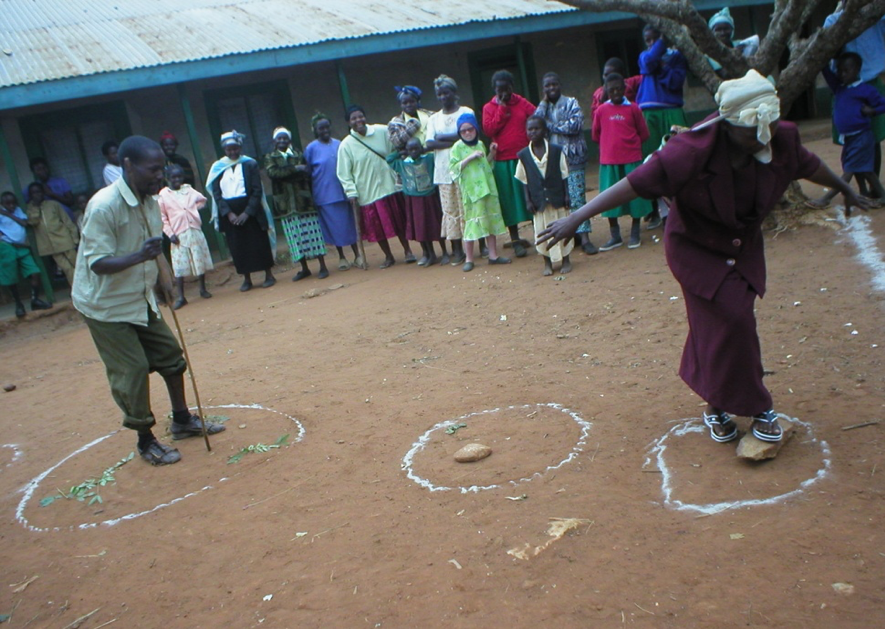
Mittler (1993) argues that voluntary organisations play a central role in organising education and other services for those with disabilities. The researcher asserts that the Diocese acted as one such voluntary organisation and collaborated with the Education Office throughout the implementation process. Fullan (1991) explains that school innovations are locally developed and that change never occurs without an advocate. He adds that external agents play an important role part in initiating change. James (1996) states that, although problematic at times, genuine collaboration has the potential to address many difficulties. He is emphatic that collaboration helps in conflict resolution, as it accommodates and celebrates differences, as long as group members share certain goals and values. Oliver (1996) adds that all educational change inevitably takes place in a co‑operative or participative environment. Clark and Clark (1994) inform that cultures which support changes are built around collegial relationships which emphasise school improvement through collaboration. The MOEST (2009) informs that it is mandated to work with other education stakeholders for purposes of providing quality education. The experience of the Embu programme was that collaboration offered diverse strengths which became vital tools that were relevant for growth. Another strength was the role played by the Diocese in capacity-building. Fullan (2006) informs that capacity-building, with a focus on results, is crucial. The researcher highlights that the programme always carried out a training needs assessment, which was referred to while developing the tailor-made training packages. Fullan advises that more investment in capacity-building allows the right to expect greater achievement.
When did the initiative/change/policy development take place (give dates)? What was the timescale?
The change was noted to have taken place during the three-year pilot project phase. This was evidenced by increased enrolment of children with special needs in government Education Assessment Centres. Embu County had two assessment centres, namely Mbeere in the lower zone and Embu in the upper zone.
The study reviewed the total numbers of children assessed as having disabilities in Embu Diocese between 1998, when the two assessment centres were established, and 2006, which was the last year for which figures were available and the end point of the pilot project. The numbers for the two centres were looked at separately and also as combined total for both. The overall result showed a considerable increase in the level of assessments following the introduction of the project. Across the two centres, the average before the project was 184 children a year and afterwards the average was 385, an increase of over 200%. The increase happened immediately in Mbeere, where the number of assessments more than doubled in the first year of the project. In Embu, the first year showed no increase but there was a substantial increase in subsequent years. The increase in assessments occurred in both centres but was greater in Mbeere.
Implementation progress – feedback from the pilot schools
A good number of 21 head teachers (70%) reported that the implementation process was more developed than originally planned. Seven head teachers (23%) stated that the implementation progress was less developed than expected. Another two schools (7%) informed that it had progressed as originally planned. A noted observation was the alleviated poverty levels of the parents and volunteer workers at the end of the project, although on a very low scale. Both parents and volunteers gained leadership positions in their communities. One volunteer was employed by the government as a local administrator. The social workers, teachers and medical personnel who had earlier been trained as trainers received promotions. Some teachers were promoted to become education officers. While this worked well, it negatively affected the programme as these people were transferred to work elsewhere.
As earlier explained, the key source of implementation success was training. King and McGrath (2002) point out that education and training initiatives can both build upon and be facilitated by the range of co-operative relationships. Fullan (1991) states that many innovations are locally developed or ‘interpreted’. Schools and school systems must therefore design their own versions, based on what they know or understand about how innovations might best work in practice. UNESCO (2005) advises that teachers, parents and communities are more than just a valuable resource; they are key to supporting all aspects of the inclusion process. Fullan (2011) agrees and says that success does not come from ad hoc individuals beavering away but rather from strategies that leverage the group.
The type of training provided to the 342 teachers in the 30 pilot schools
There were 342 teachers working in the 30 pilot schools. During the implementation stage, these were given training at different levels. The Diocese, in collaboration with the Kenya Institute of Education, provided Diploma qualifications to 28 (8%) teachers. A total of 191 (56%) received one week in service, with another 44 (13%) undergoing Diploma certificate training. A high number of these, 263 (76.9%), attended different kinds of community training.
The schools gave the key causative factors to the success of the pilot project as follows:
- The role of the Diocese as the change agency
- Training provided to the school community
- Changes in teacher/community attitudes
- Improvement of teacher skills
- Community participation leading to project ownership.
The training was carried out in collaboration with the Kenya Institute of Special Education (KISE) for both the teachers and communities. Fullan (1991) agrees with this approach and argues that if change is to happen, everyone is implicated and must face it in relation to their own role. In its Sector Support Programme paper, the MOEST (2005) states that it plans to ensure that school infrastructure development plans take into account the conditions of the local communities. O’Toole (1993) argues that although community involvement is repeatedly exhorted in the literature, few effective examples of how it translates into action are readily available. The researcher asserts that the Embu Programme is one such example.
Summary of the feedback on outcome from stakeholders in the two case study schools at the end of the pilot project
School A reported school improvement, while School B reported little to no improvement. School A owned the implementation process while School B experienced ownership challenges. The pupils in School A reported improved discipline in school, while pupils in School B talked of discipline challenges. Children with disabilities in School A said the school was a good place, while those in School B reported that school was a bad place. Teachers in School A reported improved individual teacher motivation and presence of community support while those in School B reported frustration and minimal community support. The community volunteers from School A reported improved self-development while those in School B reported minimal self-development. The parents in School A reported enhanced community support, good teacher‑parent collaboration, continued school attendance and improved health, including diminished blood pressure. School B reported good school attendance, negative community attitude, limited teacher-parent collaboration and persistent health problems, including blood pressure. The researcher observed leadership challenges in School B. The schools were next door neighbours. The researcher insists that there is a lot to learn from the experiences of the two schools.
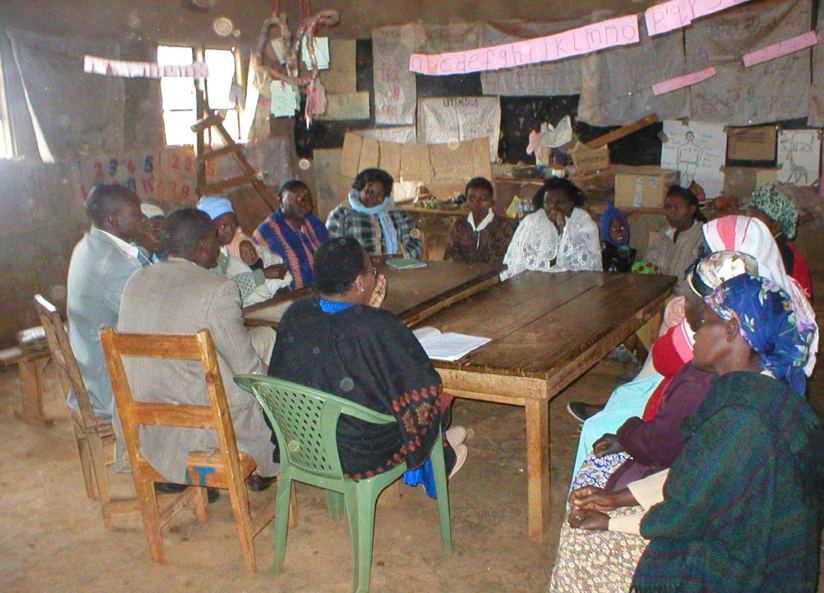
Fullan (2002) clarifies that good leaders should have good ideas and present them well, while at the same time seeking and listening. He insists that good leaders try to build good relationships even with those they may not trust, while also being alert to differences in opinion. He suggests that successful leaders do not mind when naysayers rock the boat and adds that doubters sometimes have important points. He provides the opinion that leaders should look for ways to address these concerns. This theory worked well for School A but not so well for School B. The researcher observed several such leadership challenges in School B.
The study agrees with Fullan (1991) that what schools are supposed to do is complicated and that educational change is a learning experience for all. This view is supported by Pather (2007) who says that inclusion as a concept has been problematised over and over again. Peters (2007) adds that inclusive education in the context of the goals of Education for All is a complex issue. Mittler (1993) states that professionals must be convinced of the need to demystify their professional domains. Fullan (1991) insists that educational change is technically simple but socially complex. Davies et al. (1998) inform that practitioners may be more comfortable doing what they have always done than exploring more challenging and difficult areas in which they are likely to make mistakes.
Dyson (2005) cautions that while inclusion may be principle for some, it could simply be a convenient and ambiguous language for others. He cautions that either way it is characterised by complexities and ambiguities that arise from deep-seated dilemmas. The complexities of inclusion, he says, are compounded by the fact that ‘the trajectories are not determined simply by high minded debate, nor even by the practicalities of education policy making’. This paper sees the latter as the experience of School B. Mittler (2000) points out that there are limits to what schools can do on their own. He goes on to inform that those who work in schools are citizens of the local community and that the school is the heart of any community.
The study suggested that future research should include:
- teacher training;
- inclusive classroom management;
- school community capacity support;
- community-based rehabilitation;
- inclusion and community development;
- collaboration and networking;
- inclusion policy development;
- local and global inclusion concerns;
- correlation between inclusive education and decolonisation of education;
- curriculum development for inclusion;
- the current status of Embu Inclusive Education Programme;
- inclusion and community-based rehabilitation as strategies for decolonising education.
Mittler (2000) asserts that inclusion involves a radical rethink of policy and practice. Fullan (1991) adds that external agents play an important role in initiating change.
The biggest challenges
- Lack of clear national and district inclusion policy
- Limited capacity among teachers and other stakeholders
- Ad hoc support from the Education Office at the local and national level, as support only came while a certain officer was in post. Fullan (2011) informs that success does not come from ad hoc individuals beavering away, but rather from strategies that leverage the group
- Limited collaboration between development agents
- Limited support from inclusion scholars and professionals.
Lessons learnt
- It is important to improve on teacher capacity.
- Change of attitude was key.
- School community participation added value.
- Project ownership during initiation and implementation facilitated continuity/sustainability.
- Effective school leadership was vital during implementation.
- Inclusion implementation is possible in Kenya if applied in the right context.
- There is a need to restructure all teacher training institutions and schools.
- Research will be important to help work from on-the-ground evidence.
Since the initial research that worked to evaluate the programme, there has been limited follow up. Proposal for support on future development has been made to various agents, however this is unresolved at present. The Diocese continues to support the programme with minimal support. It intends to intensify implementation of the project once relevant collaboration is entrenched. About 90% of the initiatives have continued with the support of the community and well‑wishers.
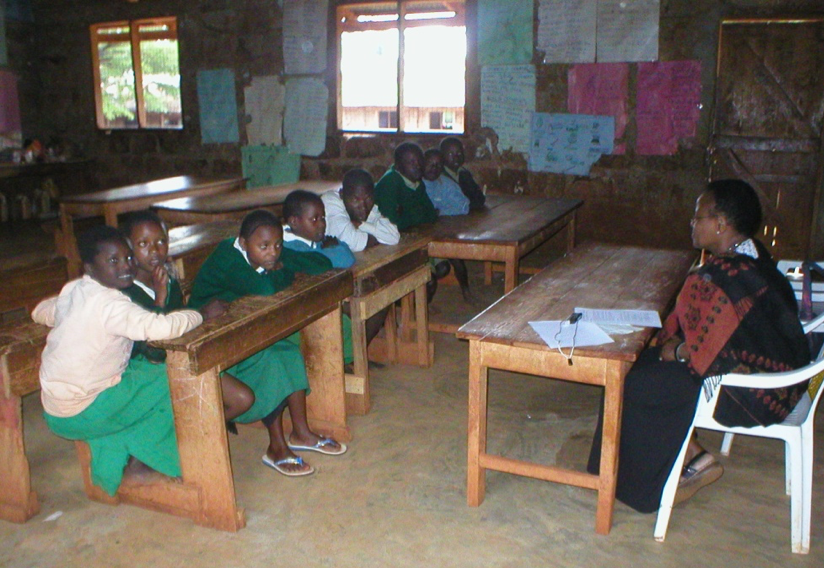
The current development plans remain at the community level. These however have not received adequate support to move forward.
The project documentary has been placed in over a dozen universities in the United States of America, but collaborative support is yet to be entrenched.
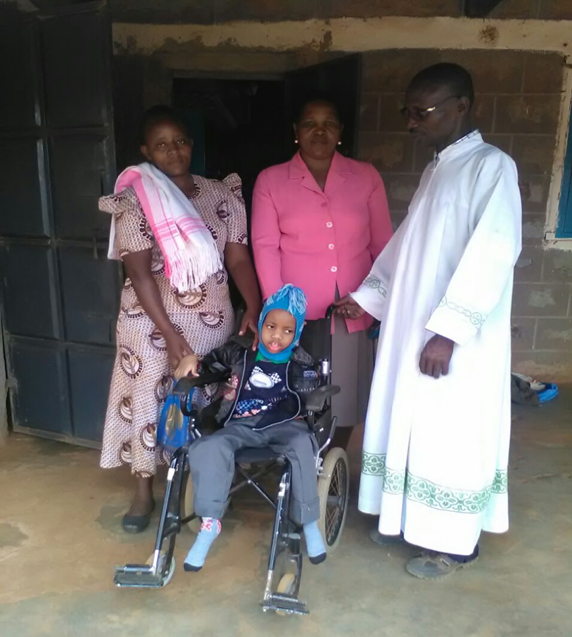
Dr Cecilia W. Nyaga,
Project advisor, Diocese of Embu,
Bishop’s Office,
P.O Box 1499,
60100, Embu,
Kenya.